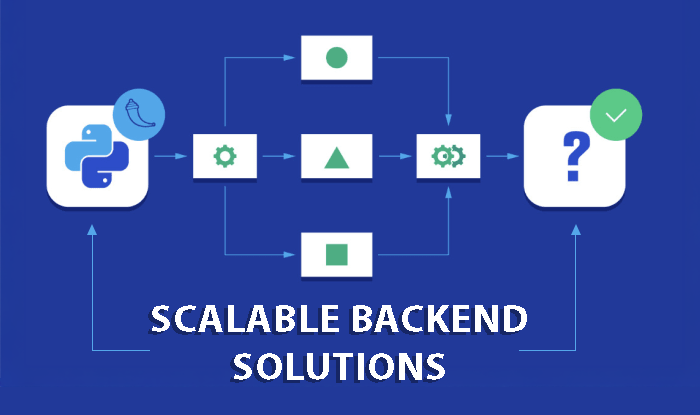Scalable Backend Solutions for Startup Applications.
This is a requirement in the dynamic world of the applications that should scale up with increased demand from users. A well-crafted backend ensures that if your user base grows, then your application will respond and be consistent.
Knowing Scalability in Backend Development
Scalability refers to the ability of the system to accept increased loads without its performance experiencing a reduction in any form. For a start-up company, it refers to designing a backend that can grow in size along with an increase in users, data, and transactions. Building a scalable backend solution means your application will be able to handle increased loadings in terms of added users, transactions, and data without bottlenecks.
Strategies for Building Scalable Backends
-
Selecting the Right Architecture:
- Microservices architecture: split the application up into many smaller, independent services. This provides greater scalability because each different service can be deployed and scaled independently
-
Database Optimizations
- Use scale horizontal databases, for example, NoSQL databases. Optimized indexing with optimized queries has better performance
-
Load Balancing
- This will allow incoming traffic over multiple servers to avoid no single point of failure that might turn out to be the point where all the rest fail. Through load balancers, one can then ensure ideal performance in situations of high loads.
-
Implement Caching:
- Cache frequently accessed data in memory to make use of the caching mechanisms. Then it will reduce the database load and improve the response time.
-
Asynchronous Processing
- Asynchronous processing deals with the message queues that process computationally intensive operations. It is, therefore, possible for it to execute operations in the background without hindering the requests that users make on the system.
Scalable Backend Development Technologies
-
Node.js
- It is a non-blocking, event-driven architecture, and it's the most efficient application of scalable network applications.
-
Python with Django:
- Django has allowed for faster development with a clean, pragmatic design. It's usable for scalable applications. Java with Spring Boot
-
Java with Spring Boot:
- Spring Boot has made production-ready applications that are scalable
Challenges in Scaling Backend Applications
Scalability is the increase in system capacity for back-end applications with the increase in workloads. Scalability requires increased transition for microservices but needs careful planning and vigilance. It is also low and cost-effective, and security needs to be considered along with mastering several technological areas.
Conclusion
Scalability is one of the important factors of the backend for startups who are looking to scale and grow their businesses. Proper strategies and the right technologies help you ensure your application remains robust and responsive when demand increases.
At Aimerse Technologies, we specialize in creating customized tailor-made solutions built based on tech stacks amongst many, like; React.js, Node.js, Python Django, Laravel, and Java Spring Boot, ensuring your startup development is scalable according to your needs.











